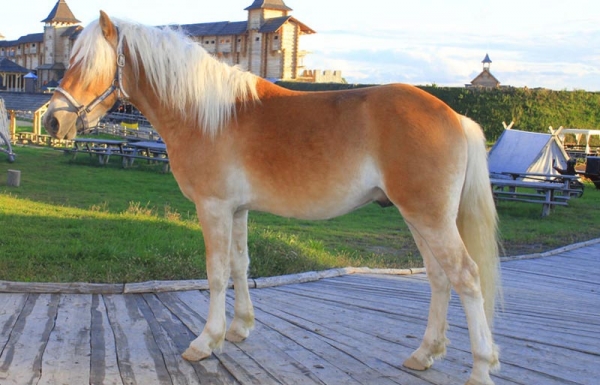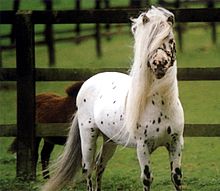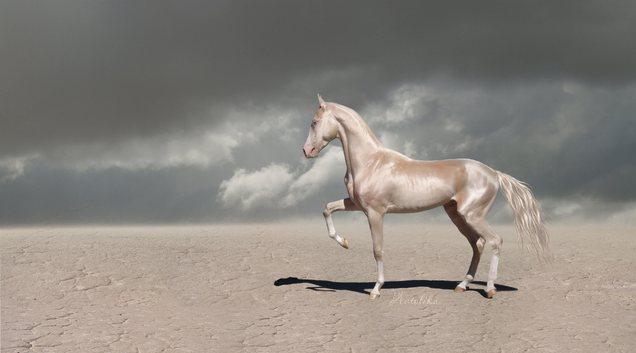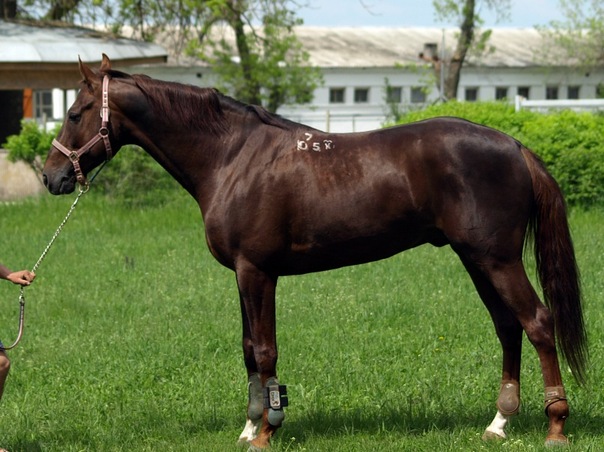Ancient breed of horses – Arabian thoroughbred (part 1)
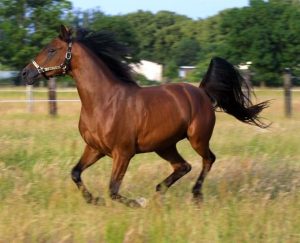 Typical features of the Arabian breed of horses: a square head in the forehead with a slightly concave nose bridge, dry build, a curved neck. The ears are thin and very mobile. The horse’s body is round, the croup is straight and long. In the photo of the Arabian horse you will see all the beauty and grace of these ancient horses.
Typical features of the Arabian breed of horses: a square head in the forehead with a slightly concave nose bridge, dry build, a curved neck. The ears are thin and very mobile. The horse’s body is round, the croup is straight and long. In the photo of the Arabian horse you will see all the beauty and grace of these ancient horses.
Galloping Arabian thoroughbred horse
The limbs of the horses are thin and long, but strong, the tail is high. The muscular forearms are well developed. Metacarpus solid, short, hock joints low, large length and width. Headstock of medium length, with the right angle. The hooves of the Arab thoroughbred horse are small, rounded, and are distinguished by a hardy and strong base. In general, the setting of the legs is very successful.
The animals are small. The average height for males at the withers is approximately 153 cm, for females – 150 cm. The metacarpus of the stallions is 20 cm, of the mares – 18.5 cm, and the chest circumference is 178 cm and 173 cm, respectively. The suit is most often gray, of various shades, but there are individuals that are red and bay. Very rarely found black individuals, especially beautiful. With age, gray-colored animals acquire “buckwheat”. Occasionally you can see a roan color or silver bay.
Arabian horse walking in the field
An Arabian horse has a small head with bulging eyes, a neck with a typical swan curve, very light. The back is medium in length and the chest is very wide. A distinctive feature is the “cock’s tail”, which rises high with a quick move.
In Arabian thoroughbred horses there are four types of exterior:
Siglavi. Elegant animals of short stature, with an average physique. Usually gray. This type is quite light and not too frisky in racing.
Cocheilan. Massive and hardy type with a strong constitution. The horses have a wide chest, and the color is usually red or bay.
Hadban. The largest animals in the breed, but not pedigree. This type makes excellent sports pets. The suit, as a rule, bay or red, sometimes gray.
Cocheilan siglavi. The type is notable for its high growth and great working capacity. In fact, these are mixed lines that incorporate the massiveness of coheilans and dry forms of siglava. Suits are gray, red, bay.
Story
The Arabian breed of horses has improved for many centuries, but its appearance is not well understood. According to ancient figures, these animals were already on the territory of the Arabian Peninsula five thousand years ago. Living near nomadic tribes, the horses perfectly adapted to the difficult trials of the desert and became extremely hardy.
The treasure of the Arab sheikhs – KoheilanArabian thoroughbred horses appeared, according to some assumptions, due to the intervention of the Syrian, Berber, Persian and Turkish breeds. Initially, all the “Arabs” were from the Coheilan line.
“Arabs” made a significant contribution to global horse breeding. It began in the 7-8 centuries, along with the spread of Islam in Africa and Spain. The horses of the Arabian invaders excelled other breeds in many respects, which is why they began to improve the local horses. Breeding is ongoing. Purebred individuals are now, but not in their historical homeland. It is believed that finally the Arabian breed of horses was formed in the 7th century in the Bedouin tribes.
Siglava stallion light gray
The Bedouins used horses as military men. Animals were provided with good care and nutrition, even in desert conditions. As a result, a small, well-knocked horse appeared, frisky at a gallop and unpretentious. The first “Arabs” were discovered in the era of the Crusades, but for a long time were the secret wealth of the Arab nomads. Under pain of death, it was forbidden to sell them to other countries. Also, the ban was on crossbreeding with the northern breeds, so the horses were bred clean for centuries.
In the Middle Ages, fast and attractive horses of the Arabian breed improved European horses: draft, riding and heavy trucks. These horses first came to us under Ivan IV. For example, thanks to the “Arabs”, a thoroughbred horse appeared, and in Russia, a streltsy and Terek horses. The legendary stallion Smetanka, known from the pictures, in the 18th century gave rise to two Oryol breeds, and then the Russian horse. In the West, a special Anglo-Arabian breed of horses was bred by combining thoroughbred riding and Arabian breeds.
Arabian horse Sour cream. Figure of the XVIII century.
At the end of the last century, interest in Arabian horse racing increased. Well proven animals, in horse races, dressage. Therefore, Arab thoroughbred horses are very successful at all world auctions. The cost of some stallions may exceed a million dollars.
The cleanliness of the lines is monitored by the Community of the Arabian breed along with the World Organization of the Arabian Horse. Exact criteria of pedigrees are established. To record a horse as a purebred, they must be performed. Now in Russia there are more than two thousand thoroughbred “Arabs”, and their number is increasing.
